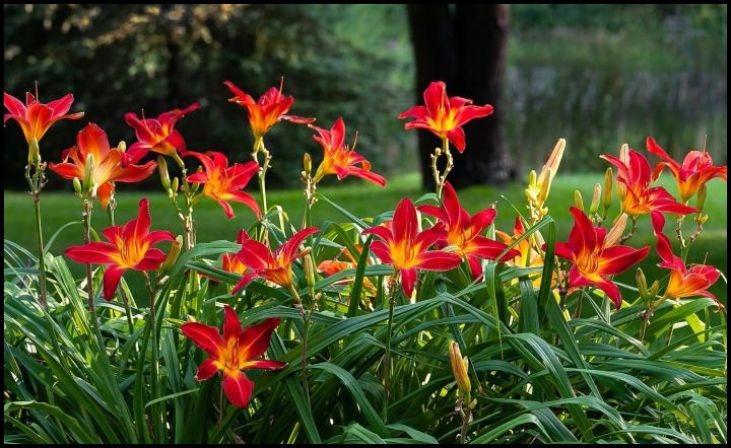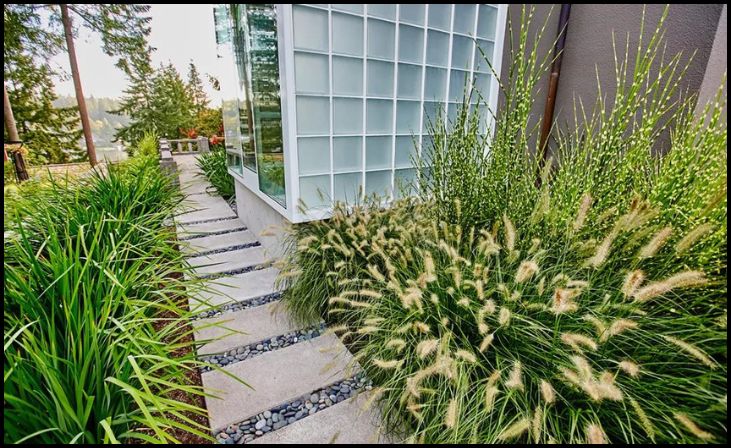Fall is a crucial time for perennial plants. As the season transitions to winter, it’s essential to prepare your garden for the colder months ahead. One of the most important tasks is cutting back certain perennials. This practice not only helps maintain the health and appearance of your garden but also promotes robust growth in the coming spring. In this guide, we’ll explore seven perennials that benefit from a fall trim, ensuring they thrive year after year.
1. Hostas
Hostas are beloved for their lush foliage and shade tolerance. However, their large leaves can become tattered and unsightly as fall progresses. To keep hostas looking their best, cut back the foliage to ground level once it begins to yellow and wither. Removing the leaves prevents diseases and makes spring cleanup easier, allowing the plant to rejuvenate with fresh growth in the next growing season.
2. Daylilies (Hemerocallis)

Daylilies are reliable performers in the garden, producing an abundance of colorful blooms throughout the summer. To maintain their vigor, it’s essential to trim back the foliage in fall. Cut the foliage down to a few inches above the ground after the first frost or when it begins to yellow. This practice prevents the plant from expending energy on dead foliage and encourages stronger regrowth in the spring.
3. Peonies (Paeonia)
Peonies are prized for their luxurious blooms and intoxicating fragrance. While they are low-maintenance, proper fall care is essential for their long-term health. Once the foliage turns brown and dies back, cut it down to ground level. Removing the spent foliage helps prevent fungal diseases and ensures a tidy appearance. Be sure to dispose of the trimmings to prevent the spread of any potential pathogens.
4. Ornamental Grasses

Ornamental grasses add texture and movement to the garden, but their foliage can become unsightly if left unchecked in the fall. To maintain their aesthetic appeal and prevent self-seeding, cut back ornamental grasses to a few inches above the ground in late fall or early winter. Use sharp pruners or hedge shears to make clean cuts, taking care not to damage the crown of the plant. Removing the old growth also allows new shoots to emerge unhindered in the spring.
5. Black-eyed Susans (Rudbeckia)
Black-eyed Susans brighten the garden with their cheerful yellow flowers and long blooming season. To keep these perennials looking their best, it’s essential to tidy them up in the fall. Once the flowers have faded and the foliage begins to die back, trim the stems down to a few inches above the ground. This practice helps prevent the spread of diseases and encourages vigorous regrowth in the following year, ensuring a vibrant display of blooms.
6. Sedum (Stonecrop)

Sedums are valued for their drought tolerance and late-season interest, with many varieties boasting colorful foliage and sturdy stems. To maintain their compact habit and prevent flopping, it’s recommended to cut back sedums in the fall. Trim the stems to ground level after the first hard frost or when the foliage begins to decline. This practice not only improves the plant’s appearance but also promotes better air circulation, reducing the risk of disease.
7. Coneflowers (Echinacea)
Coneflowers are a favorite among pollinators and gardeners alike, thanks to their vibrant blooms and easygoing nature. However, to ensure healthy growth and abundant flowers year after year, it’s important to cut back coneflowers in the fall. Once the flowers have faded and the foliage starts to decline, trim the stems down to a few inches above the ground. This practice helps prevent self-seeding and removes any diseased or pest-infested foliage, setting the stage for a spectacular display in the next growing season.
Conclusion
As fall arrives, it’s time to prepare your garden for the colder months ahead. By cutting back certain perennials, you can promote their health and vitality, ensuring they return with vigor in the spring. From hostas to coneflowers, these seven perennials benefit from a fall trim, helping them thrive year after year. So grab your pruners and give your garden the care it deserves, setting the stage for a beautiful display of blooms in the seasons to come.






